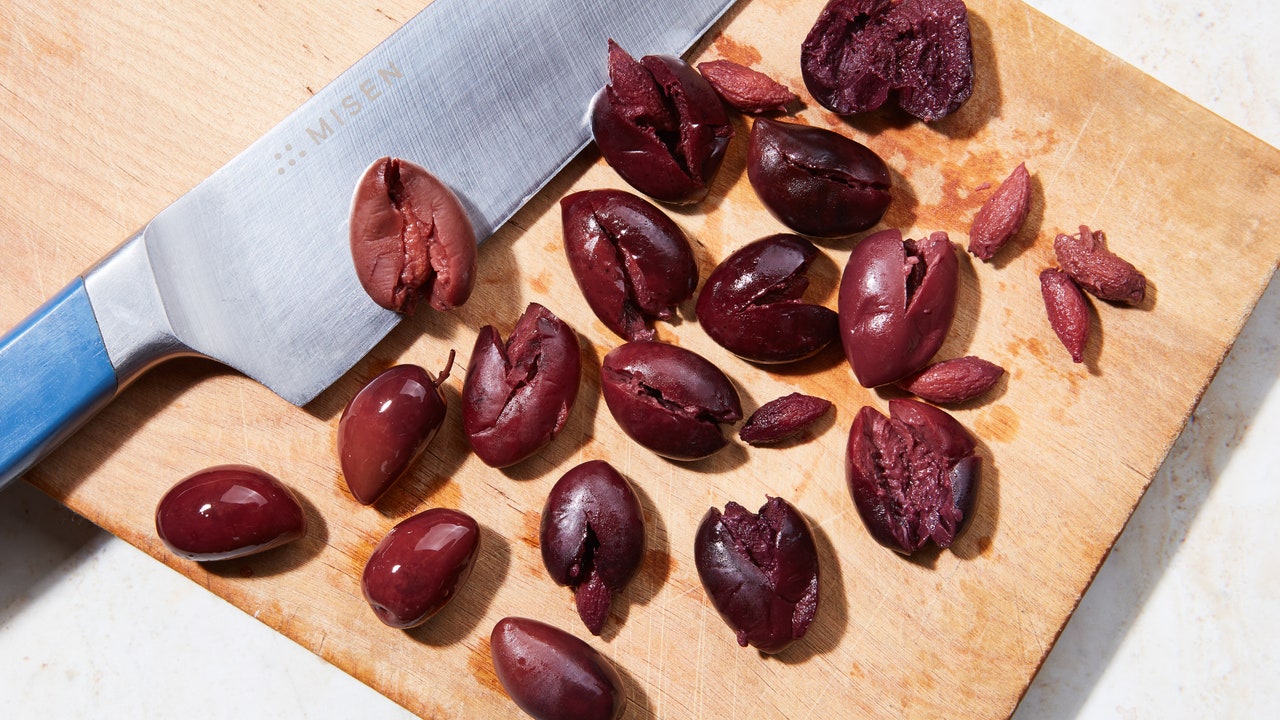I must admit that I used to despise olives. They were in the same category as mushrooms, blue cheese, and raw fish—foods that scared me for no apparent reason when I was younger. However, my perspective changed not too long ago when I discovered Castelvetrano olives. These olives, with their taste reminiscent of salty olive oil in solid form, won me over. Now, I enjoy their grassy salinity in pasta dishes with tomatoes and chile flakes, as well as the contrast they provide when paired with juicy honeydew in salads. Most of all, I love the taste of whole olives when jazzed up with citrus and spices.
It didn't take me long to start incorporating olives into my home-cooked meals. But when I first decided to do so, I was faced with a dilemma: should I buy pitted or unpitted olives? And if I choose olives with pits, how should I go about pitting them for use in recipes like chicken marbella? If these questions resonate with you, keep reading as I sought advice from a food stylist, a line cook, and a grocery store owner to uncover the best way to pit olives at home and the case for pitting them yourself. Here's what I found:
What's the best way to pit olives at home?
To get straight to the point, you don't need any fancy tools or gadgets to pit olives at home. Everyone I spoke to agreed that a simple knife is the best tool for the job. The type of knife and technique you use may vary depending on personal preference and the type of olive you're working with.
Phoebe Fry, a former line cook at popular New York City restaurants Cervo's and Hart's, shared her method of pitting olives by placing them on a flat surface and using the side of a chef's knife to break open the flesh before removing the pits with her fingers. She described it as a low-tech but effective approach that, while time-consuming, is quicker than other olive-pitting methods. For most olives, this method is the easiest and fastest because you can crush multiple olives at once without having to separate the meat from each side.
Food stylist and cookbook author Susan Spungen also recommended using a chef's knife to smash the olive, depending on the variety. She noted that some olives, like Castelvetranos, have the meat tightly clinging to the pit and may require a paring knife to slice off the lobes. On the other hand, oil-cured black olives can be torn off the pit without a knife. However, tiny Niçoise olives are nearly impossible to pit at home, so serving them with pits is a viable option.
Christine Sahadi Whelan, cookbook author and owner of Sahadi's Middle Eastern grocery store, prefers using a paring knife for most olives. She slices off the four sides of the olive and then pulls off the remaining ends with her fingers to avoid cutting into the pointed end of the pit. Whelan emphasized the importance of using a sharp knife due to olives' round shape and tendency to roll.
Should you buy an olive pitter?
While special olive pitting tools are available, none of the culinary professionals I spoke with had used them or found them particularly effective. Whelan explained that olive pits tend to stick to the meat more than cherry pits, making olives less suitable for standard pitters. Using a sharp knife you already own is a more practical and efficient option.
Spungen and Fry both agreed that pre-pitted olives have their time and place, especially when making tapenade or dressings where the olives are finely chopped. However, they highlighted the textural and flavor differences between pre-pitted and hand-pitted olives. While pre-pitted olives may be saltier and mushier, hand-pitted olives offer a more organic look and texture, which can be preferred in certain dishes.
Ultimately, the choice between pitted and unpitted olives depends on the recipe and personal preference. Don't hesitate to use pre-pitted olives for large-scale preparations, but opt for unpitted olives when serving them alone or in dishes where their flavor and texture are essential. Now you're equipped to create all the puttanesca, tagine, and Niçoise dishes your heart desires—just don't forget to have your trusty knife on hand.
